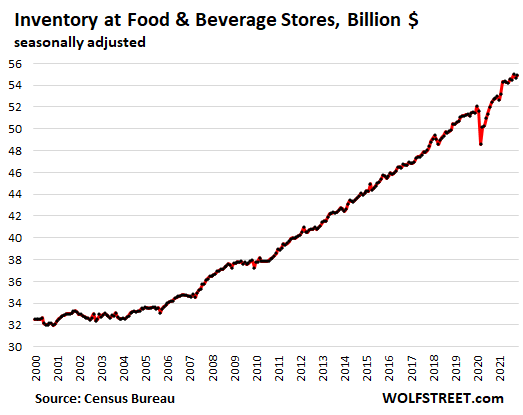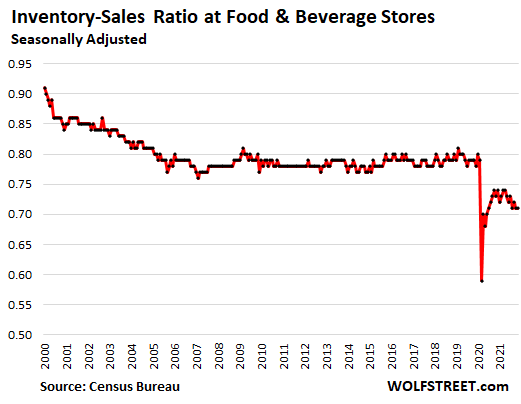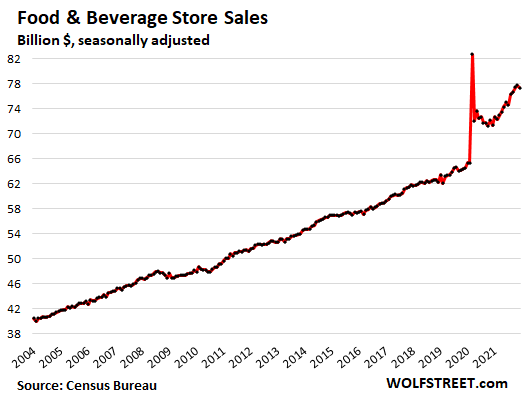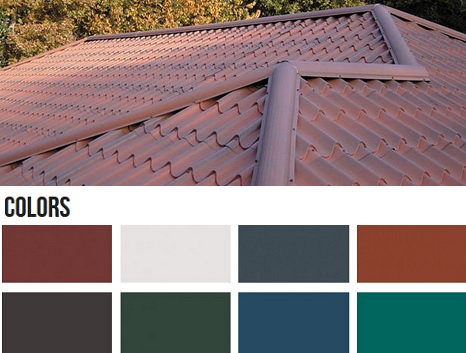Empty Shelf at a Grocery Store Near You? Tight Inventories, Labor Shortages, Supply Chain Snags, Strong Sales, Soaring Costs
It shows how brittle the system has become in face of every new challenge.
By Wolf Richter for WOLF STREET.
Grocery-store shoppers are sporadically encountering portions of a shelf that is suddenly empty when a week earlier there was plenty of product. There are again social-media “reports” of purchase limits of some items, such as toilet paper (why is it always toilet paper?) at some Costco, or pasta at some Walmart, or beef at some Safeway, or whatever. You can buy all kinds of stuff, but you might not be able to get one or two items that are part of your normal list.
At fault is a combination of problems. Staffing shortages due to the difficulty of hiring people are now being aggravated by omicron, where employees that tested positive have to self-isolate and can’t come to work for a few days. This impacts supermarkets and their suppliers in a big way. Transportation companies, faced with soaring demand, already struggled with driver shortages that was further aggravated by omicron, and further aggravated by the recent snow storms first in the West and then in the East, entailing traffic chaos and closed highways.
For businesses that have been operating on their finely tuned lean-inventory strategies, it has been challenging for the past 22 months to keep the shelves stocked.
And the costs of everything have soared – which generates a phenomenon where inventories, measured in dollars, have risen to new records because the costs of the goods in inventory have soared. But sales are high too as the shift to working from home changed consumption patterns, with grocery stores getting a bigger piece of the pie. And supply, as measured in how many days of sales are in inventory, has plunged. So here we go.
Total inventories, measured in dollars, at food and beverage stores rose to a record $54.9 billion in November, according to the Census Bureau on Friday. This was up 4.1% from a year ago, and by 6.6% from November 2019, driven by soaring costs of those goods.
During the empty-shelves-period in March through May 2020, inventories dropped to $48.6 billion, same as in April 2018. This wasn’t such a big drop, but inventories had been kept so tight on purpose that, when demand suddenly increased, shelves became empty, customers walked out shocked and frustrated, and stores couldn’t maximize their revenues because they were out of product. It didn’t take much of a drop in inventory to accomplish that:

Supply as measured by the inventory-sales ratio was down to just 0.71 months (about 21 days’ supply) at the November rate of sales. The inventory-sales ratio (inventories divided by sales) is a standard metric of supply that cancels out the impact of price increases.
During the empty-shelves March 2020, supply plunged to 0.59 months (18 days’ supply) and then bounced partially back to the 0.70 months range for a few months. Then it ticked up in early 2021 to hover around 0.73 months. But then supply started tightening again and dropped to 0.71 months in August, where it has remained as retailers struggled with epic labor shortages, transportation snags, and supply-chain entanglements as their supplies struggled with the same issues:

Sales at food and beverage stores rose to $78 billion in November, the second highest ever, beaten only by hoarding-March 2020. The driver were price increases and the still ongoing situation of working-from-home that shifted some consumption from the office environment to the supermarket (this chart also includes the preliminary sales for December, which ticked down a tad):

This shows how the brittle the system has become: The supply chains, transportation, and lean-inventory strategies all the way up the supply chain, that worked so well through the Good Times 2019, have created all kinds of havoc when unforeseen factors, one after the other, became economic routine.
Grocery stores have been trying to stock up for 20 months now, to fill the holes and catch up with this historic surge in demand, but every time they make a little headway, new constraints and problems emerge, and they still don’t have enough inventory on hand to get over the hump, and they temporarily and sporadically run out of some items.
Enjoy reading WOLF STREET and want to support it? Using ad blockers – I totally get why – but want to support the site? You can donate. I appreciate it immensely. Click on the beer and iced-tea mug to find out how:

Would you like to be notified via email when WOLF STREET publishes a new article? Sign up here.
![]()
Classic Metal Roofing Systems, our sponsor, manufactures beautiful metal shingles:
- A variety of resin-based finishes & colors
- Deep grooves for a high-end natural look
- Maintenance free – will not rust, crack, or rot
- Resists streaking and staining
To reach the Classic Metal Roofing folks, click here or call 1-800-543-8938
[ad_2]
Source link


